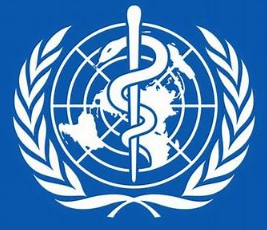July 2025.
Trachoma is not only the world’s leading infectious cause of blindness, it is also one of the most persistent public health challenges, affecting some of the poorest and most remote communities on the planet. Caused by infection with the bacterium Chlamydia trachomatis, this disease silently robs vision over years of repeated infection. Despite decades of global effort, 103 million people still live in areas where trachoma remains a threat. But there is hope, and countries like Senegal are proving that elimination is possible.
Understanding Trachoma
Trachoma is spread through personal contact, via hands, clothes, bedding, or hard surfaces and by flies that have been in contact with the discharge from the eyes or nose of an infected person. Young children are the main reservoir of infection in communities where the disease is common.
Repeated episodes of infection over years can cause the inner eyelid to scar, turning lashes inward (a condition known as trachomatous trichiasis). This leads to painful friction against the eye’s surface, eventually damaging the cornea. Once blindness sets in, it is often irreversible.
In highly endemic areas, active (inflammatory) trachoma can be found in up to 60–90% of preschool-aged children. Infection becomes less frequent with age, but reinfection is common, especially in overcrowded households with poor access to clean water and sanitation. Women are blinded up to four times as often as men, largely because of their close contact with infected children.
Global Impact and Distribution
As of April 2025, trachoma remains a public health problem in 32 countries, causing blindness or visual impairment in about 1.9 million people, roughly 1.4% of all blindness worldwide. Africa remains the most affected continent, though cases persist in Central and South America, Asia, Australia, and the Middle East.
The disease’s economic impact is staggering, costing between US $2.9 and US $5.3 billion annually in lost productivity, rising to US $8 billion when the effects of trichiasis are included.
But there is progress: 25 countries, including Morocco, China, and Nepal, have been validated by WHO as having eliminated trachoma as a public health problem.
The SAFE Strategy: A Path to Elimination
WHO recommends the SAFE strategy for trachoma elimination:
- Surgery for advanced trichiasis cases
- Antibiotics to clear infection (notably azithromycin, donated through the International Trachoma Initiative)
- Facial cleanliness to reduce transmission
- Environmental improvements, especially better access to water and sanitation
In 2024 alone, 87,349 people received surgery, and 44.4 million people in endemic communities were treated with antibiotics, representing 39% global antibiotic coverage.
Mapping the Fight Against Trachoma
The Trachoma Atlas is one of the most important tools in the global campaign to eliminate trachoma. Built from years of extensive field surveys and epidemiological research, it presents a district-by-district view of where the disease persists, where it has been brought under control, and where more data is urgently needed.
The 2020 map above focuses on Africa and parts of Asia, regions where trachoma remains most entrenched. Each colour represents a different level of TF prevalence (trachomatous inflammation–follicular), which is a key measure of active infection in children aged 1–9 years. Areas in green are below the WHO threshold for public health concern, meaning elimination is within reach or has already been achieved. Yellow and orange zones indicate communities where infection is still circulating at moderate to high levels, requiring ongoing SAFE interventions. The deep red pockets show the most severe burden, where more than half of surveyed children are affected. Hatched areas highlight places suspected to be endemic but where survey data is incomplete, a signal to health teams that further mapping is needed before targeted action can begin.
Senegal’s Victory Over Trachoma
In July 2025, the World Health Organization officially confirmed that Senegal has eliminated trachoma as a public health problem, a milestone that frees more than nine million people from the risk of blindness due to this disease.
This success is the result of years of sustained implementation of the SAFE strategy, mass antibiotic campaigns, surgical services, hygiene promotion, and improvements in water and sanitation access. Community health workers, government agencies, and international partners collaborated to ensure every at-risk district reached elimination thresholds.
In a podcast interview on Outbreak News TV, Robert Herriman spoke with Dr. Caleb Mpyet, a Nigerian ophthalmologist, epidemiologist, and trachoma technical adviser for Sightsavers, about what Senegal’s achievement means for the wider fight. Dr. Mpyet described Senegal’s elimination as proof that even in countries with high initial prevalence, coordinated, community-driven action can overcome the disease. The conversation offers an in-depth look at both the technical and human side of this public health triumph.
Trachoma remains a serious threat for millions of people in the world’s most underserved regions, but the shrinking red zones on the Trachoma Atlas tell a hopeful story. Senegal’s elimination shows that with persistence, funding, and collaboration, countries can break the cycle of infection and blindness. The global goal: elimination everywhere, is within reach, but only if momentum is maintained and the SAFE strategy is applied with the same commitment seen in Senegal.
For more information and detailed program visit these websites:
Published in GI-Mail 08/2025 (English edition).
- Do you already know our monthly newsletter GI-Mail with useful tips on postgraduate courses?
Sign up here. - Are you looking for vacancies or new career challenges? Here you will find the latest vacancies and job offers.
- Do you already know our monthly job-information GI-Jobs with current job offers for doctors, managers and nurses? Sign up here.
- Are you interested in up to date postgraduate courses and CME? In our education database »medicine & health« you will find new education events from over 2300 organizers.



